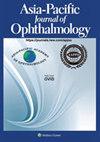Is there an impending epidemic of myopia in Southeast Asia? An appraisal of the evidence
IF 4.5
3区 医学
Q1 OPHTHALMOLOGY
引用次数: 0
Abstract
Predictions on the future prevalence of myopia suggest one of the Global Burden of Disease regions will develop an epidemic like in East Asia and Singapore in Southeast Asia. This paper analyses the available evidence on prevalence of myopia in this region, concluding that the bulk of the evidence suggests that the prevalence of myopia at the end of schooling is still modest, although two papers suggest that in young adults in Thailand and Indonesia, the prevalence of myopia may be approaching levels typical of the epidemic of myopia. It also analyses an indicator of expected years of education at school entry, as well as current educational levels of adults, using data from the calculation of the UN Human Development Index. It then analyses the results obtained by the countries of the Southeast Asian region in the PISA international surveys of student achievement. Neither of these educational indicators suggests an impending epidemic of myopia. There is a need for more data to clarify this uncertainty. It is suggested that future collection of data concentrate on determining the prevalence of myopia in young adults finishing their schooling. Even methodology as simple as determining levels of lowered visual acuity in senior school students should be sufficient to resolve the uncertainty. This group provides a sound basis for the prediction of future levels of myopia in the adult population, and avoids the impact of the high levels of myopia and high myopia associated with cataract development that occur in much of Southeast Asia.
东南亚近视流行在即吗?证据的评估。
对未来近视发病率的预测表明,全球疾病负担地区之一将像东亚和东南亚的新加坡那样发展成流行病。本文分析了该地区近视患病率的现有证据,得出结论认为,大部分证据表明,在学校结束时,近视患病率仍然不高,尽管有两篇论文表明,在泰国和印度尼西亚的年轻人中,近视患病率可能接近近视流行的典型水平。它还利用联合国人类发展指数的计算数据,分析了一项关于入学时预期受教育年限的指标,以及成年人目前的教育水平。然后分析了东南亚地区国家在PISA国际学生成绩调查中获得的结果。这些教育指标都没有表明近视即将流行。需要更多的数据来澄清这种不确定性。建议未来的数据收集集中在确定完成学业的年轻人近视的患病率上。即使是像确定高中学生视力下降水平这样简单的方法,也应该足以解决这种不确定性。这一群体为预测未来成人近视水平提供了良好的基础,并避免了东南亚大部分地区发生的高度近视和与白内障发展相关的高度近视的影响。
本文章由计算机程序翻译,如有差异,请以英文原文为准。
求助全文
约1分钟内获得全文
求助全文
来源期刊

Asia-Pacific Journal of Ophthalmology
OPHTHALMOLOGY-
CiteScore
8.10
自引率
18.20%
发文量
197
审稿时长
6 weeks
期刊介绍:
The Asia-Pacific Journal of Ophthalmology, a bimonthly, peer-reviewed online scientific publication, is an official publication of the Asia-Pacific Academy of Ophthalmology (APAO), a supranational organization which is committed to research, training, learning, publication and knowledge and skill transfers in ophthalmology and visual sciences. The Asia-Pacific Journal of Ophthalmology welcomes review articles on currently hot topics, original, previously unpublished manuscripts describing clinical investigations, clinical observations and clinically relevant laboratory investigations, as well as .perspectives containing personal viewpoints on topics with broad interests. Editorials are published by invitation only. Case reports are generally not considered. The Asia-Pacific Journal of Ophthalmology covers 16 subspecialties and is freely circulated among individual members of the APAO’s member societies, which amounts to a potential readership of over 50,000.
 求助内容:
求助内容: 应助结果提醒方式:
应助结果提醒方式:


